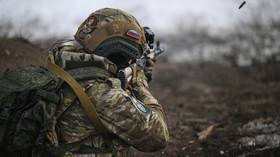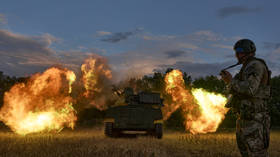Vampire bats in Peru killing more cows than previously thought – study

Vampire bats are making farmers’ lives in Peru a nightmare by preying on their cattle, a new study on the rabies ridden species suggests. However, locals living among the bats may not be aware of the cause of the bovine deaths.
Native to the Americas, the common vampire bat is depicted in Bram Stoker’s novel Dracula as the winged form of a castle-dwelling demon. Like the book’s monstrous villain, the real vampire bat subsists on a diet of blood.
But the hairy species is also known to be riddled with rabies. Now a new study claims that vampire bats are responsible for multiple cattle deaths in Peru each year, by passing on the deadly virus through its blood-sucking exploits.
In Peru, where the rodent is described as abundant, vampire bats may be flying under the radar in terms of their farm animal killing abilities.
READ MORE: Vampire bats developing taste for human blood – study
According to a study by the University of Glasgow, vampire rat rabies (VBR) cases in cattle are four times greater than officially reported. Some people may not even know that bat rabies is responsible for the death of their animals.
“Farmers who believed VBR was absent from their communities were one third as likely to report livestock deaths from disease as those who believed VBR was present, and under-reporting increased with distance from reporting offices,” the study, published in journal PLOS Neglected Tropical Diseases, states.
‘Bound by blood’: ‘Dracula’ tick gorged on 99mn yo dinosaurs https://t.co/C9ffLY5ML1pic.twitter.com/HLwGbhZBPu
— RT (@RT_com) December 13, 2017
Analyzing rabies cases over 11 years and questionnaires from the locals in the regions of Apurimac, Ayacucho, and Cusco, researchers concluded that between 505 and 724 fall victim to the vampire bat annually. The findings are based on spatially-corrected models using data gathered from 40 communities. The deaths and the vaccines to help combat the issue amounts to US$300,000 in lost revenue, the study added.
The saliva from the bats anesthetizes its victim, allowing it to feed on the blood of animals, primarily birds and cows. Earlier this year, Brazilian scientists found evidence of human blood in vampire bat feces.















